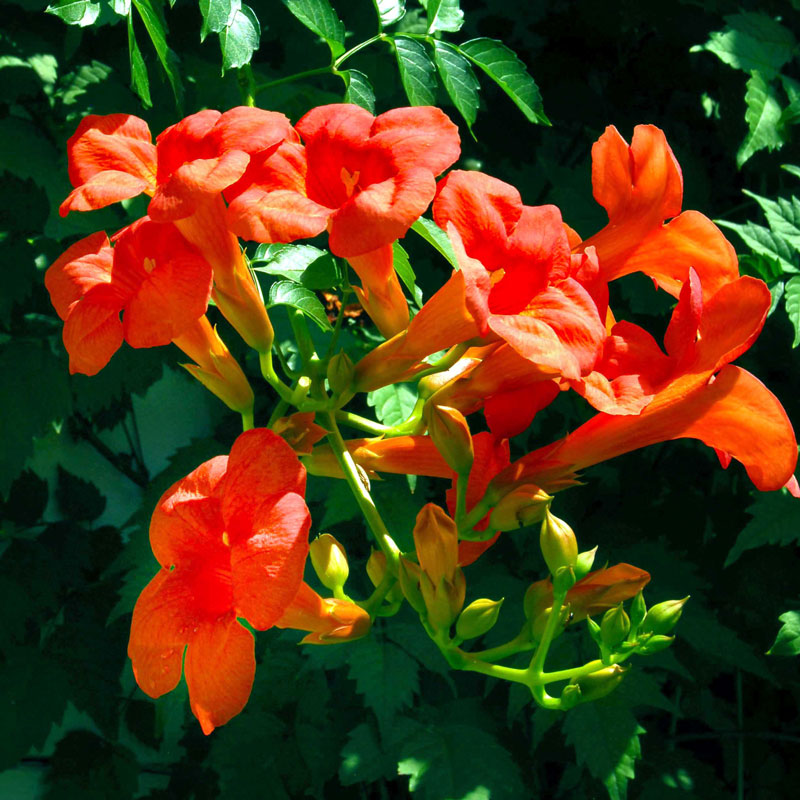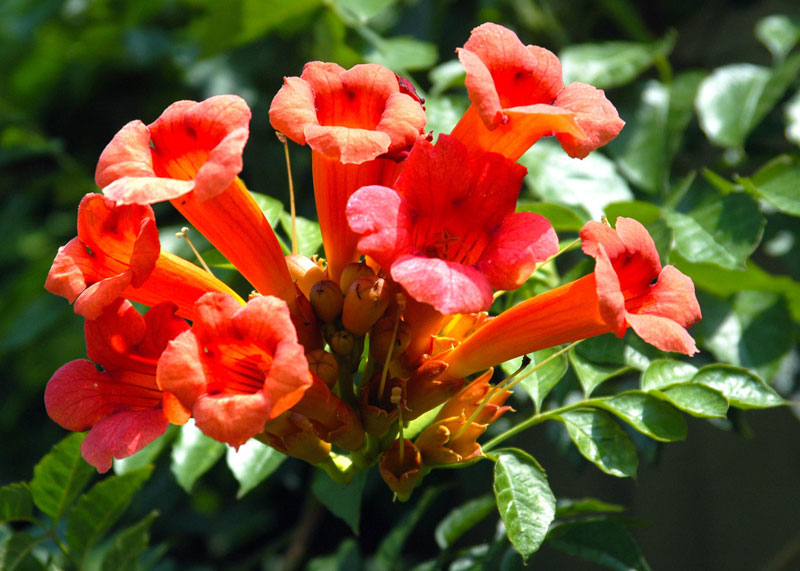Madame Galen Trumpetcreeper
You probably already have met her, but if not, this is the finest summer-flowering vine we have here in Texas. Madame Galen trumpetcreeper blooms for three months, and it’s adapted to all Texas soils, full sun, and broiling hot weather. What more could a gardener ask?

All you need to know about it…
Common name: Madame Galen trumpetcreeper or Madame Galen trumpetvine.
Scientific name: Campsis x tagliabuana ‘Madame Galen’
Origin of the plant: A cross between American and Chinese trumpet vines made by Italian nurserymen, the Tagliabue brothers who developed the plant in the mid-19th Century. This plant has been beautifying the world’s gardens for almost 200 years!
Growth habit and size: Vine, growing to 20 ft. tall and 25 ft. wide.
Sun or shade: Full sun for best bloom.
Hardiness Zone: USDA Hardiness Zone 4 – extremely hardy to winter cold anywhere in Texas.
Evergreen or deciduous: Deciduous with dark green foliage that turns yellow in fall.
Flowers, fruit: Blooms all summer with rich orange, trumpet-shaped blossoms that are displayed in elongated clusters. Bean-like seed pods split open when ripe to release seeds that will blow in the wind. Since Madame Galen is a hybrid, you do not want to propagate new plants from these seeds. They will not “come true.”
How is it propagated? It could be tip-layered or air-layered if desired. However, cuttings are much faster and easier.
Good for pollinator garden? Yes! A favorite with hummingbirds. They love its oversized trumpet-shaped blooms. Longhorns fans will love their color.

If you do have a native trumpetvine in your yard already, and if it’s sprouting up plants all over your landscape, you’ll either have to dig each plant up individually or spray them with a broadleafed herbicide (containing 2,4-D). They must be severed from the mother plant, however, and it should be dealt with on its own.
